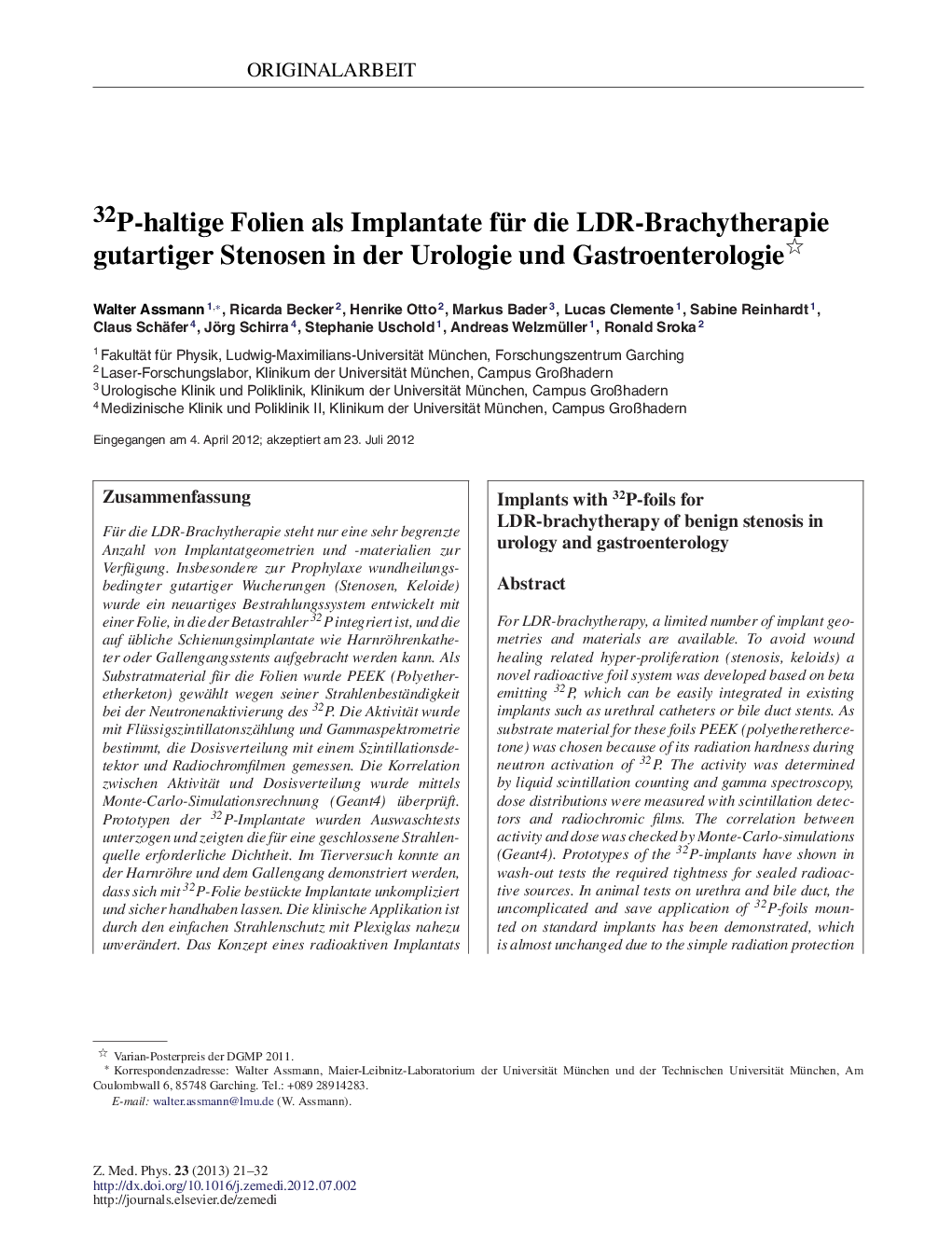| Article ID | Journal | Published Year | Pages | File Type |
|---|---|---|---|---|
| 1887042 | Zeitschrift für Medizinische Physik | 2013 | 12 Pages |
ZusammenfassungFür die LDR-Brachytherapie steht nur eine sehr begrenzte Anzahl von Implantatgeometrien und -materialien zur Verfügung. Insbesondere zur Prophylaxe wundheilungsbedingter gutartiger Wucherungen (Stenosen, Keloide) wurde ein neuartiges Bestrahlungssystem entwickelt mit einer Folie, in die der Betastrahler 32P integriert ist, und die auf übliche Schienungsimplantate wie Harnröhrenkatheter oder Gallengangsstents aufgebracht werden kann. Als Substratmaterial für die Folien wurde PEEK (Polyetheretherketon) gewählt wegen seiner Strahlenbeständigkeit bei der Neutronenaktivierung des 32P. Die Aktivität wurde mit Flüssigszintillatonszählung und Gammaspektrometrie bestimmt, die Dosisverteilung mit einem Szintillationsdetektor und Radiochromfilmen gemessen. Die Korrelation zwischen Aktivität und Dosisverteilung wurde mittels Monte-Carlo-Simulationsrechnung (Geant4) überprüft. Prototypen der 32P-Implantate wurden Auswaschtests unterzogen und zeigten die für eine geschlossene Strahlenquelle erforderliche Dichtheit. Im Tierversuch konnte an der Harnröhre und dem Gallengang demonstriert werden, dass sich mit 32P-Folie bestückte Implantate unkompliziert und sicher handhaben lassen. Die klinische Applikation ist durch den einfachen Strahlenschutz mit Plexiglas nahezu unverändert. Das Konzept eines radioaktiven Implantats mit integrierter 32P-Folie könnte den Einsatzbereich der LDR-Brachytherapie erheblich erweitern.
For LDR-brachytherapy, a limited number of implant geometries and materials are available. To avoid wound healing related hyper-proliferation (stenosis, keloids) a novel radioactive foil system was developed based on beta emitting 32P, which can be easily integrated in existing implants such as urethral catheters or bile duct stents. As substrate material for these foils PEEK (polyetherethercetone) was chosen because of its radiation hardness during neutron activation of 32P. The activity was determined by liquid scintillation counting and gamma spectroscopy, dose distributions were measured with scintillation detectors and radiochromic films. The correlation between activity and dose was checked by Monte-Carlo-simulations (Geant4). Prototypes of the 32P-implants have shown in wash-out tests the required tightness for sealed radioactive sources. In animal tests on urethra and bile duct, the uncomplicated and save application of 32P-foils mounted on standard implants has been demonstrated, which is almost unchanged due to the simple radiation protection with plexiglass. This concept of radioactive implants with integrated 32P-foils could extend essentially the application possibilities of LDR-brachytherapy.
